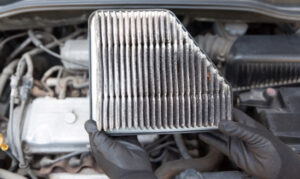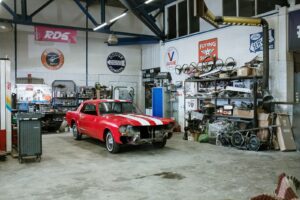Introduction
A fuel pressure regulator is an essential component in a vehicle’s fuel system. It regulates the amount of fuel that is delivered to the engine, ensuring that the engine runs efficiently and smoothly. However, like all car parts, the fuel pressure regulator can develop problems over time. In this blog post, we will discuss the common causes of fuel pressure regulator problems and the steps you can take to fix them.
Symptoms of a Failing Fuel Pressure Regulator
A failing fuel pressure regulator can cause a variety of symptoms, including poor engine performance, stalling, and difficulty starting the engine. Additionally, the “Check Engine” light may come on, and you may notice a decrease in fuel economy.
Cause of Fuel Pressure Regulator Problems
The most common cause of fuel pressure regulator problems is a clogged fuel filter. A clogged fuel filter can restrict the flow of fuel to the engine, causing the fuel pressure regulator to fail. Additionally, a malfunctioning pump or a leak in the fuel system can also cause problems with the fuel pressure regulator.
Diagnosing the Problem
The first step in diagnosing a problem with the fuel pressure regulator is to check the fuel pressure. If the fuel pressure is too low or too high, the fuel pressure regulator is likely the cause of the problem.
Fixing the Problem
Replacing the Fuel Filter If a clogged fuel filter is causing the problem, the first step is to replace the fuel filter. This is a relatively simple task that can be done with basic tools.
Replacing the Fuel Pressure Regulator
If the fuel pressure regulator is found to be the cause of the problem, it will need to be replaced. This is a more complex task that requires specialized tools and knowledge of the fuel system.
Precautions
When working on the fuel system, it is important to take precautions to avoid injury. Always make sure the vehicle is in a well-ventilated area and that there is no open flame or sparks in the area. Additionally, be sure to wear protective gear, including gloves and safety glasses.
Conclusion
A fuel pressure regulator is an essential component in a vehicle’s fuel system, but it can develop problems over time. The most common cause of fuel pressure regulator problems is a clogged fuel filter. However, a malfunctioning pump or a leak in the fuel system can also cause problems. By understanding the symptoms and causes of fuel pressure regulator problems, you can take the necessary steps to fix the problem and ensure that your vehicle runs smoothly and efficiently.










